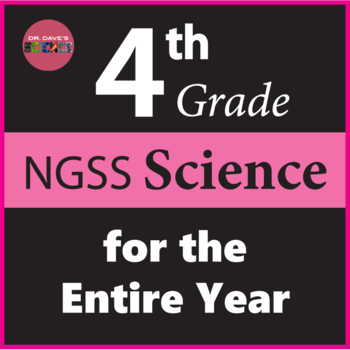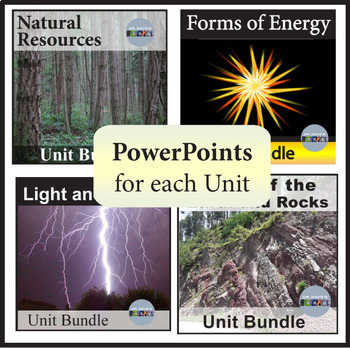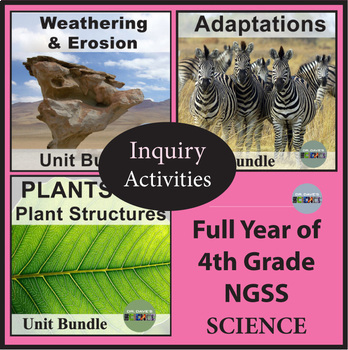4th Grade Science Curriculum NGSS Curriculum for Entire Year
- Zip
Products in this Bundle (20)
showing 1-5 of 20 products
Description
An entire year of 4th grade elementary NGSS science. These seven units cover all of the 4th grade content standards of the Next Generation Science Standards. Each unit is full of inquiry based activities, data tables and graphs, reading comprehension, worksheets, lots of other resources and comes with an engaging PowerPoint. STEM activities are embedded in some of the units. Works for homeschool science or a classroom teacher. Please click the previews on each unit to see the description for each unit. You receive a full 25% discount for each unit by purchasing this comprehensive curriculum.
Science Units in this NGSS Bundle
(3) Light and Sound
(5) Plants and Plant Structures
(7) Energy and Energy Transformations
Continually upgrading
June 2023 - Major upgrade to Energy Unit
Purchasing for multiple teachers?
Purchase 1 license for EACH TEACHER. The first license is at list price. All additional licenses are at a reduced cost. You can add additional licenses when you add the curriculum to your cart.
The curriculum aligns to many 4th grade state science curriculums, including Michigan MI-Access Science, Arkansas Science Cambium Assessment, Illinois Science Assessment ISA, Iowa Statewide Assessment of Student Progress ISASP, California Science Test, Washington Comprehensive Assessment of Science WCAS, and the Oregon Statewide Assessment System OSAS.
Terms of Use Copyright © Dr. Dave’s Science. All rights reserved by author. This product is strictly for individual use and may not be copied or given to other teachers. Copying any part of this product and placing it on the Internet in any form (even a personal/classroom website) is strictly forbidden and is a violation of the Digital Millennium Copyright Act (DMCA).
Dr. David Purvis. After obtaining a PhD in Microbiology, I switched careers and became a middle school and elementary science teacher because I loved kids. Almost thirty years later I have taught science in some context to every grade level from pre-K to college education classes. No matter what grade you are teaching, science should include fun for students. My store offers rigorous resources that align meaningful content, an inquiry approach, NGSS standards, and student interest.
Follow my store for more and happy teaching!





